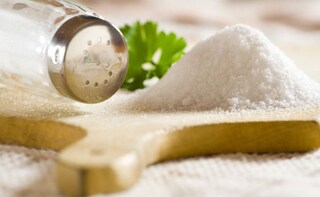Salt is a wonderful ingredient that can totally transform the taste of your dish. But the biggest challenge while using it is to understand how much is required. Too much or too less salt both can alter the taste of the dish totally and therefore, it is important to sprinkle just the right amount. One way to go about this is to stick to the recipe and keep tasting after every addition till you feel satisfied. If you've added too much salt by mistake, there's a way to sort that out too. In gravy dishes, you can add a potato to soak up the salt or blend some coconut milk, squeeze a lime or sprinkle a pinch of sugar to balance out the flavours.
Advertisement
Advertisement
Advertisement
For the latest food news, health tips and recipes, like us on Facebook or follow us on Twitter and YouTube.
Advertisement
